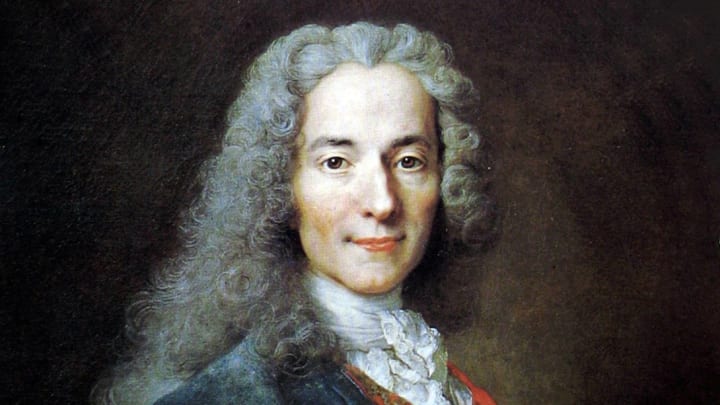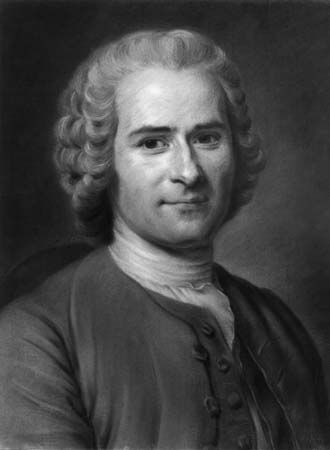The enigma of the Count of Saint Germain has fascinated scholars, mystics, and conspiracy theorists for centuries. Who was this enigmatic figure who claimed to possess the secret of eternal life, mastered alchemy, and rubbed shoulders with European royalty? Delving into historical records, eyewitness accounts, and modern analyses, this article explores the real Count of Saint Germain, separating fact from fiction in a tale that blends history, mystery, and legend.
The Historical Context of the Count’s Emergence

The 18th century was a period of immense social and intellectual upheaval in Europe, marked by the Enlightenment, scientific advancements, and political revolutions. It was during this era that the Count of Saint Germain first appeared on the scene, a time when figures like him could thrive in the shadows of courtly intrigue and esoteric pursuits. This section examines the broader historical backdrop that allowed such a mysterious character to emerge and gain prominence, highlighting how the cultural and political climate of the time contributed to his enigmatic persona.
The Enlightenment Era and Esoteric Movements
The Enlightenment brought a surge in rational thought and scientific inquiry, yet it also fueled a counter-movement of mysticism and occultism. Many intellectuals and nobles sought knowledge beyond the empirical, turning to alchemy, Freemasonry, and spiritualism for answers. The Count of Saint Germain fit perfectly into this world, presenting himself as a master of ancient wisdom. His claims of longevity and alchemical prowess resonated with those disillusioned by the era’s materialism.
In this environment, secret societies flourished, providing a network for individuals like Saint Germain to operate discreetly. He was rumored to be involved with groups such as the Rosicrucians, who blended Christian mysticism with alchemical traditions. This association not only elevated his status but also allowed him to disseminate ideas that challenged conventional wisdom. Historians note that figures like him often served as conduits for forbidden knowledge, making him a symbol of the era’s dual nature—rational yet mystical.
Moreover, the political instability of the time, with wars and shifting alliances, created opportunities for spies and adventurers. Saint Germain’s ability to move freely between courts suggests he might have been an intelligence operative, using his charisma and knowledge to influence events. This context underscores how the Count was not just a product of his time but an active participant in shaping its cultural narrative.
Social Dynamics in European Courts
European courts in the 18th century were hotbeds of intrigue, where nobles engaged in lavish displays of wealth and power. The Count of Saint Germain navigated these circles with ease, impressing figures like Louis XV of France with his wit and supposed miracles. His social agility was key to his survival, as he leveraged connections to gain patronage and protection.
This social landscape was characterized by a fascination with the exotic and the unknown. Travelers and mystics from distant lands brought tales of magic and immortality, which Saint Germain embodied. His performances, such as turning base metals into gold or creating flawless diamonds, captivated audiences and reinforced his image as a supernatural being. Yet, beneath the spectacle lay a shrewd understanding of human psychology and court politics.
In examining these dynamics, it’s clear that Saint Germain’s success depended on the gullibility and aspirations of the elite. He offered them a glimpse of immortality and unlimited wealth, commodities highly valued in an age of uncertainty. This interplay between reality and illusion highlights how historical figures like him could manipulate social structures to their advantage.
The Role of Travel and Global Connections
The 18th century saw unprecedented global exploration, with trade routes connecting Europe to Asia, Africa, and the Americas. The Count of Saint Germain claimed to have traveled extensively, visiting places like India and Egypt, where he allegedly acquired ancient secrets. This global perspective added to his mystique, positioning him as a cosmopolitan figure in an increasingly interconnected world.
His purported journeys allowed him to collect knowledge from diverse cultures, which he then synthesized into his alchemical and philosophical teachings. Historians debate the veracity of these claims, butthe allure of the exotic and the possibility of secret wisdom from far-off lands captured the imagination of his contemporaries. The Count’s narratives around travel were not merely tales of adventure; they were strategic performances that enhanced his reputation as a sage.
In this era, stories circulated about great men who had traveled to distant lands and returned transformed. Saint Germain deftly woven himself into this narrative tapestry, using it as a means to engage with an audience eager for enlightenment and mystery. His ability to weave together different cultural elements reflected the diverse influences that characterized the Enlightenment, allowing his figure to resonate across various social strata.
Moreover, the influence of trade during this period cannot be understated. With commerce bringing Eastern luxuries to European courts, there was a burgeoning interest in all things foreign, including philosophies and ideas. By positioning himself as someone who had grasped the essence of these cultures, the Count appealed to the intellectual curiosity prevalent among the aristocracy. His global connections made him more than just a courtier; he became a symbol of the wider knowledge landscape that was expanding rapidly during the 18th century.
The Count of Saint Germain: Fact vs. Fiction

A major part of understanding the Count of Saint Germain involves disentangling the facts from the elaborate myths surrounding his life. Over centuries, numerous accounts have painted him as an alchemist, diplomat, and even an immortal being. This section critically examines the various claims surrounding his identity, characterizing how legends can often overshadow reality.
Eyewitness Accounts and Historical Documentation
The most prominent sources of information regarding the Count stem from eyewitness descriptions and historical documentation from those who encountered him. Travelers and courtiers alike documented their experiences with Saint Germain, often describing him in supernatural terms. These accounts are crucial, as they provide a glimpse into the perception of the Count during his time.
However, the reliability of these accounts has been a matter of debate. Some observers may have embellished or distorted their experiences, influenced by their own expectations and the mystique that surrounded him. For instance, reports of him claiming to be over 200 years old could reflect the fascination with longevity rather than an accurate reflection of his age.
Furthermore, the biases of the documenters—often members of the elite class—must also be considered. They romanticized figures like Saint Germain, imbuing them with extraordinary qualities to fit their narrative. Analyzing these documents through a critical lens can reveal how myth-making shaped the perception of the Count, transforming what may have been ordinary tales into grandiose legends.
The Impact of Alchemical Myths
Saint Germain’s association with alchemy is one of the most enduring aspects of his legend. Many believed he could transmute base metals into gold and create the philosopher’s stone—a substance said to grant eternal life. This connection to alchemy allowed him to cultivate an aura of mystery and expertise.
Yet, the practice of alchemy itself was often shrouded in allegory and symbolism. Figures such as Paracelsus emphasized spiritual transformation over material gain, suggesting that alchemical pursuits were metaphysical journeys rather than purely practical endeavors. Considering Saint Germain within this framework, it becomes evident that his mastery of alchemy might have been more about philosophical teachings and less about literal transformations.
Additionally, the psychological aspects of alchemy—the quest for personal enlightenment and self-transformation—played a significant role in appealing to the aspirations of the time. Saint Germain’s representation as an alchemist served not only to enhance his mystical persona but also to align him with broader esoteric movements seeking deeper truths beyond physical existence.
The Role of Literature in Shaping Legend
Literature has played a pivotal role in shaping the Count of Saint Germain’s narrative. From novels and plays to biographies, the literary framework has allowed the legend to flourish and evolve over time. Writers have contributed to his mystique, portraying him as a timeless figure—an archetype of the wise sage who exists beyond the constraints of mortality.
Fictionalized accounts often emphasize his adventures and encounters with famous historical figures. This storytelling has cemented his place in popular culture, leading to representations in literature that blur the line between fiction and history. Such portrayals have the power to influence public perception, perpetuating the idea of the Count as an enigmatic hero or villain, depending on the narrative arc chosen by the author.
Moreover, the emergence of occult literature in the late 19th and early 20th centuries further added layers to his story. Various authors focused on the esoteric aspects of his life, intertwining him with themes of immortality and hidden knowledge. The resonance of these stories highlights how Saint Germain transcended his historical context, becoming a symbol of the eternal search for wisdom throughout ages.
The Legacy of the Count of Saint Germain

The legacy of the Count of Saint Germain stretches far beyond his immediate historical impact. His life and exploits have inspired countless interpretations, spanning literature, art, and modern esoteric traditions. In this section, we explore how his influence continues to manifest today.
Cultural Representations and Modern Interpretations
Saint Germain’s figure has evolved in contemporary culture, appearing in various media—from films to comic books. He often symbolizes the mysterious mentor archetype, guiding protagonists on their quests for knowledge and self-discovery. This portrayal emphasizes the timelessness of the themes associated with his life, such as the search for truth, immortality, and the reconciliation of science and spirituality.
Moreover, modern reinterpretations sometimes focus on the Count as a metaphor for the human pursuit of enlightenment. This perspective allows audiences to engage with his story on a philosophical level, inviting reflections on personal growth and transformation. As society grapples with questions of existence and meaning, the Count of Saint Germain emerges as a figure emblematic of the eternal quest for understanding.
Influence on Esoteric Traditions
The Count of Saint Germain remains a significant figure in various esoteric traditions, including Theosophy and certain branches of New Age spiritualism. Groups that emphasize personal transformation and metaphysical insights often invoke his teachings and legends. His supposed mastery of alchemy is viewed not only as a historical curiosity but also as a guiding principle for spiritual seekers.
In these contexts, Saint Germain is regarded as a spiritual ascendant, embodying principles such as transcendence and enlightenment. His legacy thus thrives in contemporary spiritual practices, where individuals seek to connect with his wisdom and integrate it into their lives. This religious and spiritual dimension reflects the adaptability of his mythos, allowing it to resonate with each new generation in search of deeper truths.
Reflections on the Nature of History and Myth
Examining the Count of Saint Germain invites broader reflections on the nature of history and myth. It raises questions about how figures from the past are remembered and reinterpreted over time. The blending of fact and fiction in his narrative exemplifies how historical figures can take on a life of their own, serving as mirrors reflecting societal values and aspirations.
This analysis encourages us to consider the role of myths in shaping cultural identities and collective memories. Rather than viewing history as a linear sequence of events, it becomes an intricate tapestry woven from stories that speak to our hopes, fears, and desires. In this way, the Count of Saint Germain stands as both a historical enigma and a lasting symbol of humanity’s quest for understanding and meaning.
Conclusion
The Count of Saint Germain is not merely a historical figure; he embodies a complex interplay of history, myth, and cultural aspiration. His life and the legends surrounding him illustrate how individuals can shape narratives that transcend their realities, weaving themselves into the fabric of human consciousness. From the vibrant backdrop of the Enlightenment to the enduring cultural representations in modern times, the Count of Saint Germain remains an enigmatic presence inviting exploration and interpretation. As we unravel the threads of his story, we engage with larger questions about knowledge, spirituality, and the nature of existence itself.

GIPHY App Key not set. Please check settings